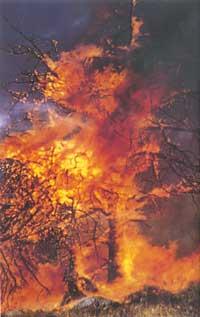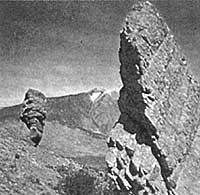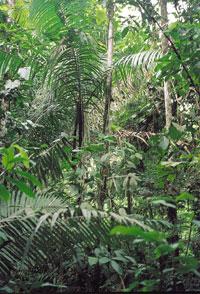Fire?
1995/12/01 Elhuyar Zientzia Iturria: Elhuyar aldizkaria
Autumn. Next to the skirt, fires everywhere: In the mountains of Euskal Herria, in the Galician eucalyptums, in the Catalan pine forests, in the Andalusian holm oaks. The atmosphere is hot.
On television we have often seen the fight against fire: special groups of governments countless in helicopters and trucks, volunteers, army... the whole society against fire. Magnificent documentaries, spectacular images... And the results? Every year more fires and more serious. The surface burned by fire has increased to the same extent as that spent on fire. He is not very optimistic.
Many fires are intended, but why can't you turn them off before? Why those bad results? Of course, there is no single and simple solution, as many factors hinder firefighting, from climate or topography to social problems. However, I have my doubts, especially if the natural dynamic of fire has not been forgotten.
In short, fire occurs in all the jungles and forests of the world, from the rainforests to the boreal forests. However, the effects of fires can vary greatly depending on two main factors: climate and undergrowth fuel (litter, dried brambles, branches and trunks, etc. ). In natural forests, fuel accumulates over time and, while there are few, fires caused by lightning or any other factor do not spread much by lack of fuel; although the undergrowth is normally burned, trees do not die. Above a certain level, the fire spreads much faster and is much hotter, all with the latch.
As a master of fire, man has known it for a long time, and in many regions the fire has acted in the right time to increase the fertility of the environment. But what the Australian aborigines or African teachers knew well seems that modern man has forgotten.
And many scientists have had to learn again after a great catastrophe. Yellowstone is the first National Park in the United States and the best preserved; its firefighters are famous and yet a few years ago a terrible fire caused the destruction of much of the park. The main conclusion of the studies is that this unfortunate event was due to the sobriety of the firefighters. As the smaller fires were also extinguished, for years the fuel of the pine forests was increasing and from a moment, San Juan was ready: no one could turn off the huge pile of wood waiting for it to burn.
Fortunately, Yellowstone is recovering faster than expected. Meanwhile, the US government has changed its policy. Now the important thing is not that fire does not occur, but that the impact of fires is reduced. How is it solved? In most cases, switch on the forest before an excessive fuel increase occurs. Both reader, the main instrument of today's firefighters is the gasoline boat. At the beginning of the dry season, when the undergrowth is still humid, the forest is set on fire. This fire spreads quickly, the temperature does not rise too much, so it does not kill trees or underground seeds. Reduces fuel and disaster risk. In addition, this practice facilitates the reproduction of species such as sequoia seeds that need fire to cool down.
To avoid fires, in Australia the government also burns most forests every year. Is it not possible to apply such widespread practice on the peninsula elsewhere? Of course, the conditions are different, but the basic principles are the same.
Fire itself is not good or bad, but an important ecological factor that shapes the environment. Its natural dynamics must be understood and, consequently, act in favor of our objectives.
This last paragraph is not mine: I have found the information given to tourists in Alaska. European scientists and managers are more closed than American tourists.

Gai honi buruzko eduki gehiago
Elhuyarrek garatutako teknologia





